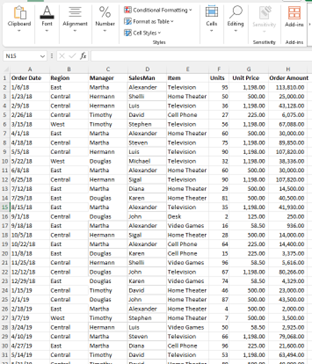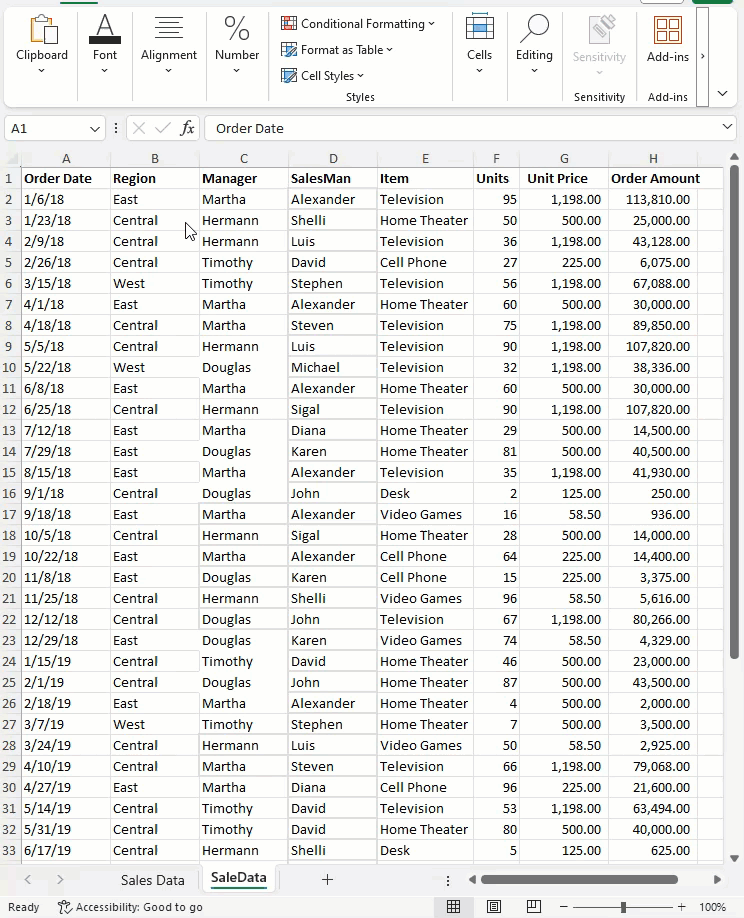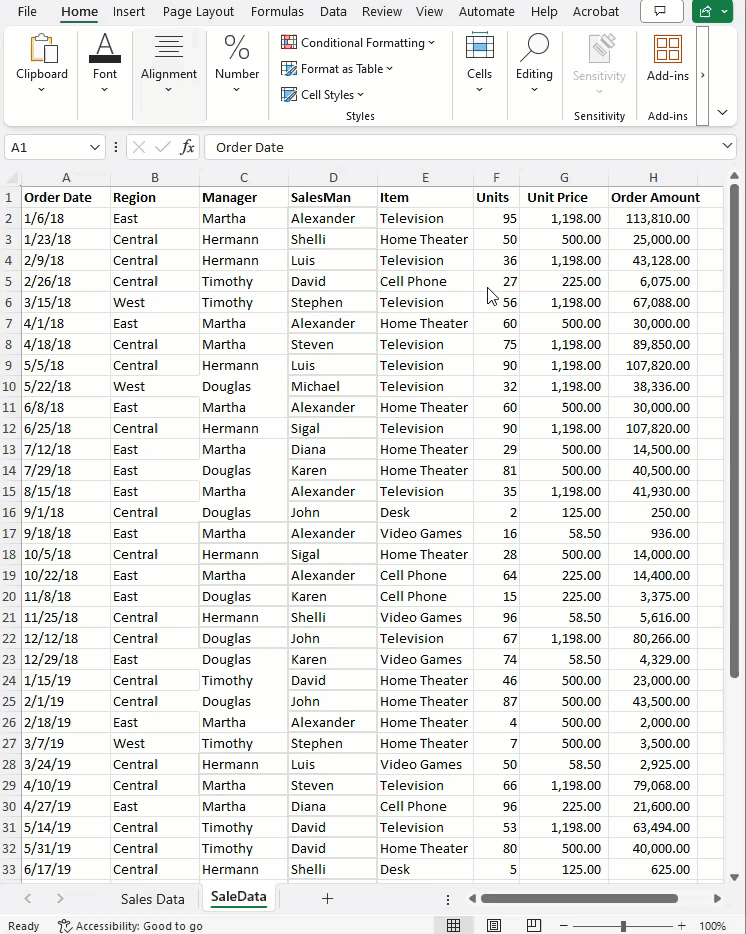Conditional Formatting: Both Functional and Visually Impressive
In the world of spreadsheet software, Excel stands out as a powerful tool for organizing and analyzing data. Among its many features, ‘conditional formatting’ is a useful tool that allows users to visually highlight important information based on specific conditions. Whether you’re a seasoned Excel user or a spreadsheet amateur, mastering conditional formatting can significantly enhance a user’s Excel proficiency.
Conditional formatting enables users to apply formatting rules to cells or ranges based on certain criteria. These rules can include anything from simple comparisons (e.g., greater than, less than) to more complex formulas. By using conditional formatting, users can quickly identify trends, outliers, or other important aspects within spreadsheets, making it easier to interpret and analyze information.
For example, review the below snippet of Sales Data for a local electronics store. The store manager tasked their assistant with highlighting all orders that exceed $40k.

Rather than manually reviewing each cell in column H, the assistant can leverage conditional formatting and apply it to all cells via the following steps:
- Select the entire column by clicking the “H” header.
- Click Conditional Formatting >> Highlight Cells Rules >> Greater Than…
- Change the variable to “40000”, click OK.
Instantly all cells in column H with orders exceeding $40k are highlighted!

After highlighting the large orders, the assistant wanted to impress their manager and decided to create a visual representation of all orders via ’data bars’ via the steps below. Data bars are similar to bar charts but are embedded in each spreadsheet cell, rather than a separate graph.
- Select the entire column by clicking the “H” header.
- Click Conditional Formatting >> Data Bars.
- Select one of the Gradient Fill or Solid Fill options.

Conditional formatting is a powerful function that empowers Excel users to visually enhance their spreadsheets and gain deeper insights into their data. The above are just two examples of the endless uses for this significant tool. With a bit of practice and creativity, organizations can take advantage of conditional formatting to gain insights into their invaluable business data.